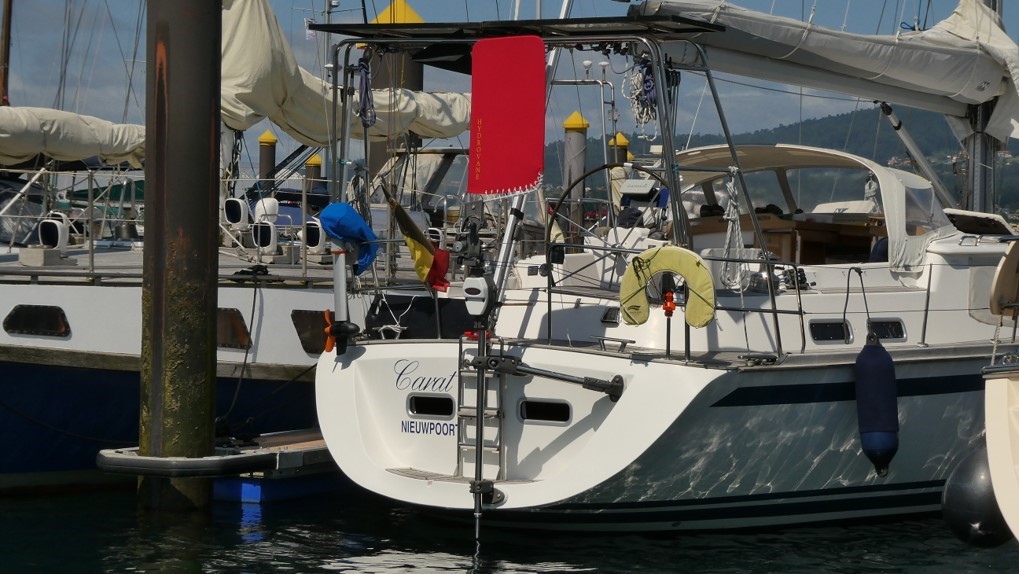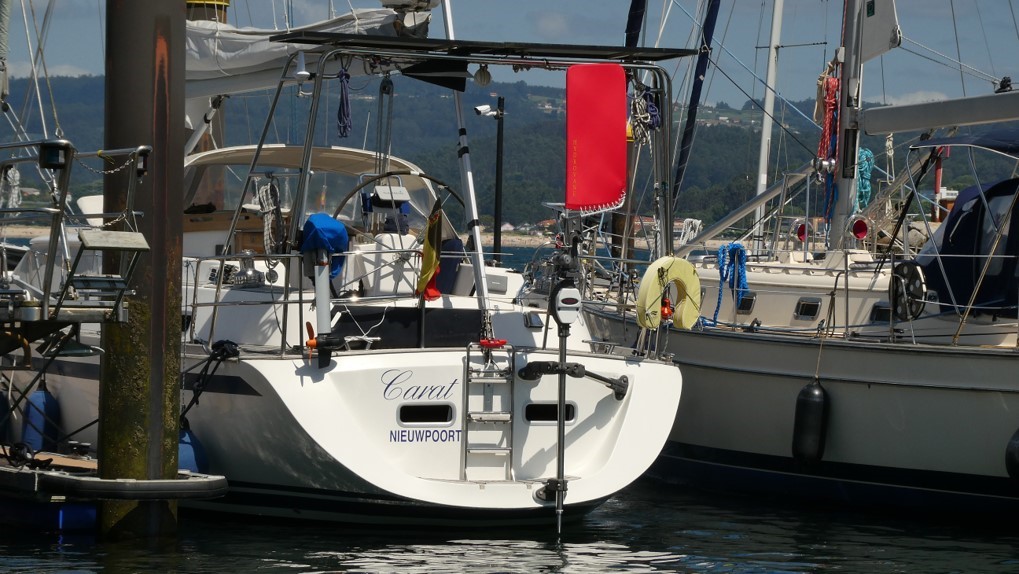 Nordship 40 DS
Nordship 40 DS
“Notre Hydrovane nous a permis sans problème de faire les 25 Mille restants pour atteindre le port de La Rochelle, sans demander de remorquage. […] C’est une aide et une sécurité indispensable en grande croisière que je recommande à tous.”
“Our Hydrovane allowed us without any problem to do the remaining 25 miles to reach the port of La Rochelle, without asking for a tow. […] It is an essential aid and safety device for ocean cruising that I recommend to everyone.”
Bonjour à tous,
Voici quelques photos du montage de notre HYDROVANE sur notre NORDSHIP 40 DS que nous avons installé nous même en octobre 2022. Je rentre de notre croisière de Port La Forêt aux Açores et je peux maintenant vous faire part de mes commentaires sur son utilisation en grande croisière.
Son utilisation demande une certaine compréhension et pratique que nous avons pu acquérir durant nos sorties à la journée un peu par toutes les conditions de vents, en hiver et au printemps de cette année, et globalement j’étais déçu car par vents irréguliers, les réglages de l’angle de barre sont trop nombreux, et le cap souvent en lacets.
Ma première grande satisfaction a été à Pâques quand nous avons PERDU NOTRE SAFRAN en allant à La Rochelle. Les conditions étaient pourtant bonnes avec un vent de NE de + ou – 20 à 25 noeuds et une mer peu formée. Notre Hydrovane barrait correctement avec la barre du bateau immobilisée, et donc peu sollicitée. Notre Hydrovane nous a permis sans problème de faire les 25 Mille restants pour atteindre le port de La Rochelle, sans demander de remorquage. La cause de la perte du safran était un problème d’électrolyse de la mèche de safran en aluminium plein de 6 cm de diamètre ( système Jeffa ).
Ensuite, pour notre voyage aller et retour vers les Açores, notre Hydrovane a fait très correctement tout le boulot et tout le temps (nous ne sommes que 2 à bord).
Il a donc besoin d’un vent régulier en force et maintient parfaitement le bateau que ce soit par vent de travers, quelque soit la force et aussi par vent arrière. GV amarrée et yankee tangonné en ciseaux. Les vagues de l’Atlantique ne limitent en rien son fonctionnement. Surtout ne pas oublier d’incliner son aérien sur son axe vers l’arrière quand il a tendance à faire faire des lacets au bateau.
C’est une aide et une sécurité indispensable en grande croisière que je recommande à tous.
Les performances du bateau ne semblent pas du tout affectées par ce deuxième safran , mais il est préférable de l’enlever pour les manœuvres d’arrivée dans un port.
Cordialement,
Jean-Marc Desantoine
TRANSLATION:
Hello All,
Here are some photos of the assembly of our HYDROVANE on our NORDSHIP 40 DS that we installed ourselves in October 2022. I have just returned from our cruise from Port La Forêt to the Azores and can now give you my comments on its use in large cruises.
Its use requires a certain understanding and practice that we were able to acquire during our day trips in all conditions of winds, in winter and spring of this year, and overall I was disappointed because in irregular winds, the helm angle settings are too numerous, and the course often erratic.
My first great satisfaction was at Easter when we LOST OUR RUDDER while going to La Rochelle. However, the conditions were good with a NE wind of + or – 20 to 25 knots and a light sea. Our Hydrovane was steering correctly with the helm of the boat immobilized, and therefore little used. Our Hydrovane allowed us without any problem to do the remaining 25 miles to reach the port of La Rochelle, without asking for a tow. The cause of the loss of the rudder was a problem with the electrolysis of the 6 cm diameter solid aluminum rudder stock (Jeffa system).
Then, for our outward and return trip to the Azores, our Hydrovane did all the work very well and all the time (we are only 2 on board).
It therefore needs a regular strong wind and holds the boat perfectly whether in crosswinds, whatever the strength and also in tailwinds. GV moored and yankee rigged in scissors, the waves of the Atlantic do not limit its functioning in any way.
Above all, don’t forget to tilt his aerial on his axis backwards when he tends to yank the boat.
It is an essential aid and safety device for ocean cruising that I recommend to everyone.
The performance of the boat does not seem to be affected at all by this second rudder, but it is preferable to remove it for maneuvers
Cordially,
Jean-Marc Desantoine


